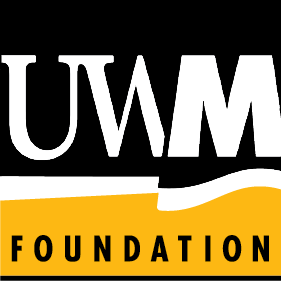Here’s what $251 million in fundraising means: ‘The gifts really touch every corner of UWM’

A quarter billion dollars.
By the end of the most ambitious fundraising campaign in the University of Wisconsin-Milwaukee’s history, alumni, corporations, foundations and individual donations totaled more than $251 million in support for the second-largest public university in the state.
The final number exceeded UWM’s goal by more than $50 million. It also dwarfs the $175 million figure UWM got when it conducted a feasibility study on what the university’s needs were and what it could realistically aim for, Patricia Borger, vice chancellor for development and alumni relations, said.
“It’s huge for the university,” Borger said. “The gifts really touch every corner of UWM.”
The reactions to that number from the 300-plus people who gathered Thursday night for the big reveal, and from people familiar with university fundraising efforts, reflect how central fundraising has become to public universities nationwide.
Though fundraising has long been the backbone to maintaining private universities that rely on endowments to support their institutions — Lawrence University, much smaller than UWM, launched a $220 million campaign late last year — public schools are now putting together equally ambitious campaigns.
During her career working in nearly every aspect of university advancement, Linda Durant said, she has increasingly seen public universities launch major fundraising campaigns as state, and in some cases federal, funding dries up nationwide.
“I see this a lot with the public (schools) and it’s gotten stronger and stronger,” said Durant, now the vice president for development at the D.C.-based Council for Advancement and Support of Education.
“In the late ’90s when I was working at a small community college, we were already at 30% of our funding coming from the state,” she said. “We had to make up the difference.”
Declining state support
UWM, like all schools in the University of Wisconsin System, has seen that decline firsthand.
In 1996, more than 40% of the university’s funding came from the state, by far the university’s largest source.
By 2005, that percentage dropped to just over 25%.
Today, 19% of UWM’s 2018-’19 operating budget came from the state.
Donations are far from an antidote to budget woes, data from UWM’s 2017-’18 budget overview shows. Data going back to the mid-1990s shows that gifts and grants have never exceeded 5% of UWM’s annual budget.
But the size and success of UWM’s seven-year campaign reflects a trend Durant has seen nationally, as universities attempt to offer helpful scholarship packages and cutting-edge educational opportunities to attract students at a time when competition for them is fierce.
“In order for an institution to bring life to their mission, the fundraising is critical,” Durant said. “The tuition dollars don’t go far enough. They don’t even cover all of their operational costs.”
And once you start, you just keep going, she said.
“The more you do it, the more donors you have and the more success you have,” she said.
She said other universities can be encouraged by UWM’s success.
“There’s a joke in our profession that you’re either planning a campaign, you’re in a campaign, or you’re ending one and getting ready for the next one,” she said. “You want to build upon that success.”
View the original article here.
